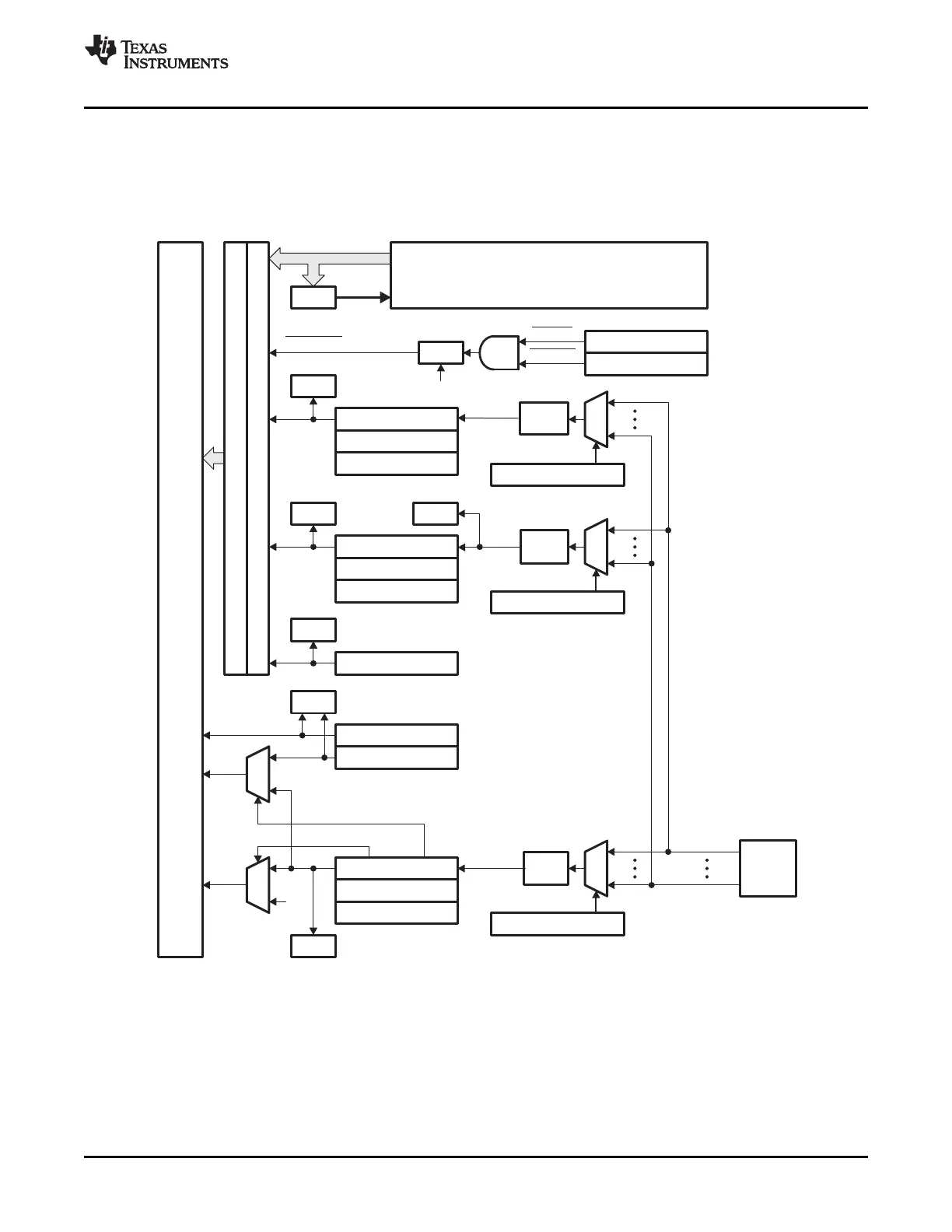6.3 Interrupt Sources
WDINT
LPMINT
Watchdog
Low-PowerModels
Sync
SYSCLKOUT
WAKEINT
DMA
Clear
Peripherals
(SPI,SCI,I2C,CAN,McBSP
C )
(A)
,
ePWM ,eCAP,eQEP, AD
(A) (A)
DMA
XINT1
InterruptControl
XINT1CR(15:0)
XINT1CTR(15:0)
XINT1
Latch
MUX
GPIOXINT1SEL(4:0)
DMA
XINT2
InterruptControl
XINT2CR(15:0)
XINT2CTR(15:0)
XINT2
Latch
MUX
GPIOXINT2SEL(4:0)
ADC
XINT2SOC
DMA
TINT0
CPUTimer0
DMA
TINT2
CPUTimer2
CPUTimer1
MUX
TINT1
InterruptControl
XNMICR(15:0)
XNMICTR(15:0)
MUX
1
DMA
NMI
INT13
INT14
INT1
to
INT12
C28
Core
96Interrupts
PIE
XNMI_
XINT13
Latch
MUX
GPIOXNMISEL(4:0)
GPIO
Mux
GPIO0.int
GPIO31.int
www.ti.com
Interrupt Sources
Figure 6-4 shows how the various interrupt sources are multiplexed within the devices. This multiplexing
(MUX) scheme may not be exactly the same on all 28x devices. See the data manual of your particular
device for details.
Figure 6-4. PIE Interrupt Sources and External Interrupts XINT1/XINT2
A DMA accessible
SPRUFB0C – September 2007 – Revised May 2009 Peripheral Interrupt Expansion (PIE) 127
Submit Documentation Feedback

